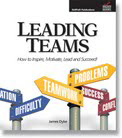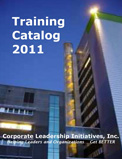More Great Advice from Top Executives and CEO’s.
Executive coach Cynthia Shapiro puts this under the heading, Your company’s real motivations:
Motivation 2: Money – Their money, not yours. If they feel you value your money more than theirs, you will be gone. The best defense is to always treat your company’s money as if it were your own.
Authors Danny Cox and John Hoover point out the true focus of this principle in their excellent book, Leadership When the Heat’s On. They claim it’s all about profitability:
“Almost every successful person I know has a keen sense of profitability. …This doesn’t mean we should become obsessed with profitability. It means we need to be driven, in part, by awareness of how our efforts transform into dollars and sense (sic).”
[Yeah…I like their pun, too!]
It Starts with YOUR Use of Company Money
Steven Schragis and Rick Frishman also weigh in on this topic in their insightful book, 10 Clowns Don’t Make a Circus…and 249 other critical management success strategies. Their advice for budding executives is straightforward:
“It’s easy to treat an expense account as an open invitation to live large. Lots of people do just that—but don’t be one of them. You don’t have to count paper clips or eat at greasy-spoon diners—simply recognize that in your professional role, you’re being entrusted with (among other things) the responsibility of acting as the company’s caretaker of cash.”
They summarize:
“Treat the company’s money at least as carefully as you handle your own.”
Stuart R. Levine (former CEO of Dale Carnegie & Associates, Inc.) agrees:
“When you travel, don’t stay at the most expensive hotel in town and don’t order the lobster. …travel as if you could be spending your pay raise. …Can you send that pack out two-day air rather than overnight? Would you request overnight service if you had to pay for it yourself? If the answer is no, use a cheaper service.”
“Every penny your company spends comes out of the same pot as your bonuses, pay raises, and base salary. Don’t spend money on things that won’t bring money back into the organization.”
Up Close and Personal
My perspective on this issue changed immediately and significantly when I started my own business. When I became the chief producer (and consumer) of income in my consulting practice, it was easy to see how every penny I saved in travel expense went directly into my own pocket as personal profit. Trust me, when I tell you that I quickly became accustomed to “comfortable” accommodations on the road, versus “extravagant” ones.
Teach the Same Perspective to Your People
Schragis and Frishman encourage this thinking as a part of your management regimen:
“Discuss expenses with your coworkers and staff. Question anything you don’t understand. You may be viewed as a bit of a killjoy or tightwad, but the bottom line is that it’s not their money—and part of your job is to be prudent about all expenditures.”
Additionally, they encourage managers to help employees see and value what their organization is spending on them—not just in salaries, but in benefits and investments in their training and development:
“Making people more aware of how much money the company is spending on them can be a good management communications strategy…”
Up Close and Personal
In my career as a management consultant, I have worked with organizations of every conceivable industry, size, and shape:
- For-profit and not-for-profit
- Public sector and private sector
- Fortune 500 and Fortune 100
I have had many managers and supervisors tell me, “We’re different…we’re not like other organizations.” But I have discovered that organizations have much more in common with each other than they have differences. In particular, one thing that ALL organizations have in common:
All organizations require money to operate.
In my management seminars, I encourage a “profitability focus” for the participants—to help them understand that one of their primary responsibilities is to contribute to the organization’s “bottom line.” And there are only 3 ways to do this—by INCREASING…
- Revenue
- Savings
- Productivity
I tell my management students, they’ve got to figure out how to MAKE it; SAVE it; or STRETCH it. (The “it” being money, of course!) In one of my past articles, I point out the importance of identifying one’s “critical path” to achieve this purpose. You can read about it with the following link, and access a valuable planning form that will aid in the process:
Authors William Doyle and William Perkins call this The Principle of Profitable Proximity and summarize it this way:
Find the bottom line and tie your career to it.
And, of course, the principle of respecting your organization’s money extends to your budget, as well!
Respect Your Budgets—Work WITH Them, not AGAINST Them
I have discovered that higher-ups have a keen appreciation for leaders who can perform successfully within the required temporal and fiscal parameters. In other words, they value leaders who excel at delivering results ON TIME and UNDER BUDGET.
You need to be that kind of leader, if you want to succeed!
That’s another reason why it is important for you as a leader to keep your team focused on the kind of thinking that will enable you—together—to deliver great results consistently! Jeffrey Fox encourages managers to embrace the challenge of budget limitations:
“Tight budgets promote creativity, ingenuity, and inventiveness. Look upon a tight budget as a challenge. Find new and less expensive ways of doing things. The corporation will be improved. You will be appreciated.”
I teach managers to tackle this challenge with their team—to continually talk and think with their people, to explore ways to do their work:
EASIER / BETTER / FASTER / SMARTER / CHEAPER / or SAFER
This requires thoughtful creativity—the ability to think INSIDE THE BOX—to exercise innovation within the restrictions of the resources available.
And yes, I wrote about this in a previous article. You can access it here:
The advice in today’s article may seem a bit obvious, but you would be amazed how many managers and supervisors ignore it. There’s an old saying, “Common sense ain’t as common as you think it might be!” That is certainly true, even in management circles. That’s why I find myself continuing to dispense a lot of “common sense” to managers, supervisors, and executives in the course of my work as a consultant, coach, and trainer!
If you are looking for more great advice that will help you stay on track for personal and professional success—stay tuned to more helpful and practical ideas coming your way in future editions!
Until next time… Yours for better leaders and better organizations,
Dr. Jim Dyke – “The Boss Doctor” ™ helping you to BE a better boss and to HAVE a better boss!







